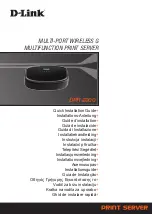
43
enough for the type of plastic you are using, the plastic will have problems passing
through the hot end, which will clog it up.
-
Attempting to use PLA in an extruder that still has ABS in it
. When you switch from
a high temp plastic like ABS to something that extrudes at a lower temperature, it is
very important to clear the nozzle of any remaining plastic to prevent clogging. Before
your next print, manually heat the hot end to ABS temps and push a little bit of PLA
through it. Once all of the ABS is cleared you can take the temp back down to the
suggested PLA temp and should have no problem extruding.
Print Resolution
There are two ways that print resolution can be measured
.
-Z resolution
.
This can be controlled in your slice engine, by editing your Layer Height. R1 can go as low as 50
microns (.05mm) and as high as 300 microns (.3mm) on layer heights. The lower the layer height,
the more layers, the longer the print but also the higher the resolution.
-X and Y Resolution
.
This is how precise the extruder can draw 2 dimensional picture on a single layer of a print. The
R1 prints with a tolerance of 20 microns (.02mm) so you get precision parts, every time.
Cooling
The R1 has an active cooling print fan installed and mounted behind the hot end. This fan is for
printing with PLA and other plastics that require quick cooling between layers. It helps cool the
layer that was just printed so that it solidifies before the next layer is printed. The print fan is not
recommended for printing with ABS, as this type of plastic requires more heat for adhesion.
Homing
Homing is when your printer goes to its “Zero” position. This happens before every print and
most of the time after as well. It is very important to make sure that there is nothing blocking
your X, Y or Z end stops before a print starts. If there is something that keeps your printer from







































